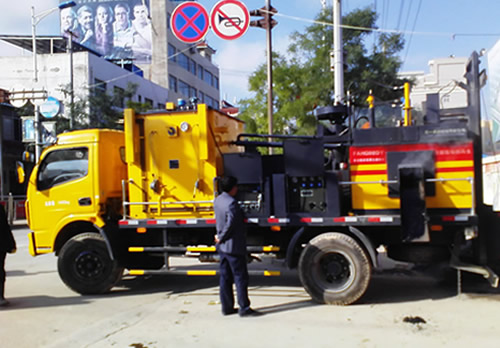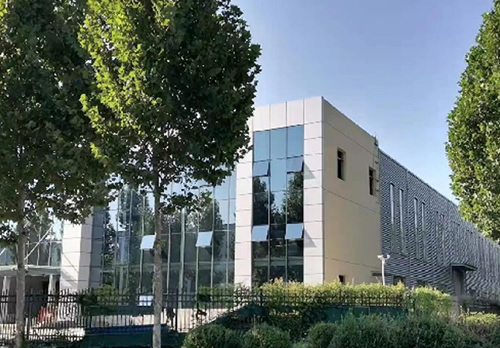1、 Introduction
In today's constantly expanding and improving modern transportation network, smooth and unobstructed roads play a crucial role in economic development, social operation, and people's daily lives. However, with the passage of time and the continuous increase of traffic flow, various diseases such as cracks, potholes, ruts, etc. will inevitably appear on the road surface. In order to timely repair these diseases and ensure the performance and safety of roads, comprehensive road maintenance vehicles have emerged. It has become an important equipment in the field of road maintenance due to its efficient and multifunctional characteristics.
2、 Working principle and structural composition of road comprehensive maintenance vehicle
(1) Working principle
The working principle of the road comprehensive maintenance vehicle is based on the combination of advanced mechanical, electronic, and hydraulic technologies. It can quickly diagnose and repair road surface diseases by integrating multiple functional modules. For example, for road cracks, it can use a heating system to preheat the road surface around the crack, and then inject sealing material into the crack to achieve sealing repair; For potholes, a milling device can be used to remove damaged pavement materials, and then new materials can be used to fill and compact them.
(2) Structural composition
Chassis: The car chassis is usually used as the foundation, which provides driving power and load-bearing platform for the entire maintenance vehicle. Different types of chassis have different load-bearing capacity and driving performance, and can be selected according to actual needs.
Storage bin: used to store various materials required for maintenance, such as asphalt mixture, sealant, etc. Storage bins generally have heating and insulation functions to ensure good performance of materials during use.
Heating system: including burner, thermal oil system, etc., capable of heating the road surface and maintenance materials. The performance of the heating system directly affects the efficiency and quality of maintenance work.
Homework equipment: such as milling machines, pavers, compactors, etc. These devices can be flexibly combined and operated according to different maintenance tasks to achieve efficient repair of road surface diseases.
Control system: Adopting advanced electronic control system, it can accurately control and monitor various functions of the maintenance vehicle. Operators can easily control the start stop and speed adjustment of the operating device through the control panel.
3、 Advantages of comprehensive road maintenance vehicles
(1) Efficiency
The road comprehensive maintenance vehicle integrates multiple maintenance functions and can complete multiple maintenance tasks in one operation, greatly improving the efficiency of maintenance work. Compared with traditional maintenance methods, it can reduce labor and equipment investment, shorten maintenance time, and reduce the impact on traffic.
(2) Multifunctionality
It can adapt to different types of road surface diseases and maintenance needs. Whether it is small-scale crack repair or large-scale pit filling, it can be achieved by replacing different operating devices. This multifunctionality makes the road comprehensive maintenance vehicle have a wide range of application prospects in road maintenance.
(3) Quality stability
The road comprehensive maintenance vehicle adopts advanced technology and equipment to ensure the quality and stability of maintenance work. For example, the heating system can precisely control the temperature to ensure the performance of the curing material; The homework device can achieve precise operation, ensuring that the repaired road surface meets the requirements for smoothness and strength.
(4) Environmental friendliness
During the maintenance process, road comprehensive maintenance vehicles can reduce the generation and emission of waste materials. For example, the milled old pavement materials can be recycled and reused, reducing environmental pollution. At the same time, its advanced combustion technology can also reduce exhaust emissions, meeting environmental protection requirements.
4、 Case study of road comprehensive maintenance vehicle in practical application
(1) Urban road maintenance
On the main road of a certain city, due to heavy traffic flow, there are a large number of cracks and potholes on the road surface. The traditional maintenance method requires the road to be closed for a long time, which has a serious impact on traffic. After adopting the road comprehensive maintenance vehicle, maintenance personnel can quickly repair it during low traffic flow at night. In just a few days, the comprehensive maintenance of the road section was completed, greatly shortening the maintenance cycle and reducing the impact on citizens' travel.
(2) Highway maintenance
A certain section of the highway suffered from rutting damage due to long-term crushing by heavy-duty vehicles. The road comprehensive maintenance vehicle quickly repaired the ruts through milling, paving, and compaction operations. The repaired road surface has significantly improved its smoothness and anti-skid performance, ensuring the safety of highway driving.
5、 The development trend of road comprehensive maintenance vehicles
(1) Intelligentization
The future road comprehensive maintenance vehicles will develop towards intelligence. It will be equipped with more advanced sensors and control systems, capable of automatically identifying the type and location of road surface diseases, and automatically adjusting operating parameters based on the disease situation. Operators only need to monitor and operate through computer screens in the cab, greatly improving the accuracy and efficiency of maintenance work.
(2) Environmental Protection
With the continuous improvement of environmental protection requirements, road comprehensive maintenance vehicles will pay more attention to the improvement of environmental performance. For example, adopting cleaner energy sources such as natural gas, electricity, etc. to reduce exhaust emissions; Optimize the use of materials and recycling processes to reduce environmental impact.
(3) Integration
In order to further improve maintenance efficiency and diversity of functions, road comprehensive maintenance vehicles will develop towards integration. It will integrate more maintenance functions, such as road cleaning, snow removal, etc., becoming a multifunctional road maintenance equipment.
6、 Conclusion
As an important equipment in the field of road maintenance, road comprehensive maintenance vehicles play an important role in ensuring smooth and safe roads with their advantages of high efficiency, multifunctionality, and environmental protection. With the continuous advancement of technology, road maintenance vehicles will continue to develop towards intelligence, environmental protection, and integration, bringing broader development prospects for the road maintenance industry. We believe that under the protection of comprehensive road maintenance vehicles, the future roads will be flatter, safer, and smoother. At the same time, relevant enterprises and research institutions should continuously increase their R&D investment, promote innovation and development of road comprehensive maintenance vehicle technology, and make greater contributions to China's transportation industry.
In addition, in the process of promoting and applying road comprehensive maintenance vehicles, it is necessary to strengthen the training of operators, improve their operational skills and maintenance level, and ensure the normal operation and efficient use of equipment. At the same time, the government and relevant departments should also formulate corresponding policies and standards to regulate the production and use of comprehensive road maintenance vehicles, and promote the healthy development of the road maintenance industry. In short, the development of comprehensive road maintenance vehicles is of great significance for improving China's road maintenance level and ensuring the sustainable development of transportation infrastructure.











 CALL
CALL PRODUCTS
PRODUCTS PROJECTS
PROJECTS CONTACT
CONTACT